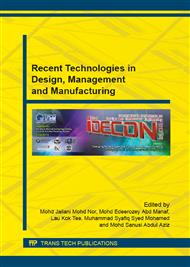p.202
p.211
p.216
p.221
p.227
p.233
p.238
p.245
p.250
Design and Analysis of Linear Quadratic Regulator for a Non-Linear Positioning System
Abstract:
The control of rotary inverted pendulum is a case of classical robust controller design of non-linear system applications. In the control system design, a precise system model is a pre-requisite for an enhanced and optimum control performance. This paper describes the dynamic system model of an inverted pendulum system. The mathematical model was derived, linearized at the upright equilibrium points and validated using non-linear least square frequency domain identification approach based on measured frequency response function of the physical system. Besides that, a linear quadratic regulator (LQR) controller was designed as the balancing controller for the pendulum. An extensive analysis was performed on the effect of the weighting parameter Q on the static time of arm, balance time of pendulum, oscillation, as well as, response of arm and pendulum, in order to determine the optimum state-feedback control vector, K. Furthermore, the optimum control vector was successfully applied and validated on the physical system to stabilize the pendulum in its upright position. In the experimental validation, the LQR controller was able to keep the pendulum in its upright position even in the presence of external disturbance forces.
Info:
Periodical:
Pages:
227-232
Citation:
Online since:
May 2015
Price:
Сopyright:
© 2015 Trans Tech Publications Ltd. All Rights Reserved
Share:
Citation:


